Caryn’s Thoughts
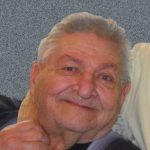 William Beadle became my uncle when he married my Aunt Virginia (Byer) Beadle 52 years ago. He always loved to tease the kids, a trait that endeared him to his family too. He was never happier than when he was teasing one of the little ones and making them smile and laugh. I think every one of his nieces and nephews remembers that the most about him. He had a sparkle in his eye, and you knew that the jokes and teasing would follow. At family functions, he could be found sitting at the edge of the crowd, with a grin on his face and twinkle in his eye. He loved it when the kids came to give him a hug and look for one of his many jokes to get them laughing. Family gatherings always seemed more for the adults. The kids needed something fun and funny to make the day fun for them too. Uncle Bill, along with the other uncles provided that funny part, because the aunts were busy getting the meal on the table.
William Beadle became my uncle when he married my Aunt Virginia (Byer) Beadle 52 years ago. He always loved to tease the kids, a trait that endeared him to his family too. He was never happier than when he was teasing one of the little ones and making them smile and laugh. I think every one of his nieces and nephews remembers that the most about him. He had a sparkle in his eye, and you knew that the jokes and teasing would follow. At family functions, he could be found sitting at the edge of the crowd, with a grin on his face and twinkle in his eye. He loved it when the kids came to give him a hug and look for one of his many jokes to get them laughing. Family gatherings always seemed more for the adults. The kids needed something fun and funny to make the day fun for them too. Uncle Bill, along with the other uncles provided that funny part, because the aunts were busy getting the meal on the table.
Uncle Bill was born in Worland, Wyoming to William and Bertha Beadle, and he never really left the Wyoming area, except to travel maybe. Wyoming suited him. He loved to fish and hunt, and there are few places that are better for that than Wyoming. I think he was a true “Wyoming Westerner” from way back. He loved watching westerns, and I’m sure that he could envision himself right there in the thick of the story. He brought his kids up to love Wyoming too, and they still live here to this day. Uncle Bill and Aunt Virginia taught them how to see the best in their great state.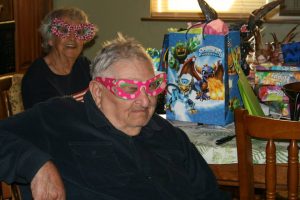
In the later years, we didn’t see Uncle Bill as much. His memory wasn’t good, and it was difficult for him with big family gatherings. I always missed seeing him there, and at first I wasn’t even sure why he wasn’t there. I didn’t know much about memory loss then. I know a lot more now. It is difficult for the person who can’t remember who these people are, where they are, or even why they are there. That thought makes me sad for Uncle Bill, who had always been the jokester at these gatherings. Today would have been Uncle Bill’s 91st birthday. Happy birthday in Heaven Uncle Bill. We love and miss you very much.
 After being honorably discharged from the Navy, my niece, Gaby Beach, who married my nephew Allen Beach on September 24, 2014, started working while Allen when to college to get his degree. Once he was finished, the plan was for Allen to work while Gaby went to school to get her degree. It was a good plan, because it allowed each of them to study hard, without having to work. They could devote themselves to their studies. While Allen now works as the department manager over referral, communications, ambulances, Gaby is getting ready to begin her second year of nursing school. Having worked as a corpsman in the Navy, nursing is a perfect next
After being honorably discharged from the Navy, my niece, Gaby Beach, who married my nephew Allen Beach on September 24, 2014, started working while Allen when to college to get his degree. Once he was finished, the plan was for Allen to work while Gaby went to school to get her degree. It was a good plan, because it allowed each of them to study hard, without having to work. They could devote themselves to their studies. While Allen now works as the department manager over referral, communications, ambulances, Gaby is getting ready to begin her second year of nursing school. Having worked as a corpsman in the Navy, nursing is a perfect next  step for Gaby, who was a very good corpsman.
step for Gaby, who was a very good corpsman.
These days, when she’s not studying, Gaby has become very interested in house plants. She has a green thumb, and loves plants. She has decided to complete the “Let’s Grow Together In 2020” initiative. I looked over the program, and it would be really a cool thing to do…if I didn’t have a decidedly brown thumb. Unlike me, Gaby has a real knack for plants, and for arranging them. I know that her plants will beautify their home, and make it a healthier place too. Plants a good to have in the home…as long as you can keep them alive, that is. Gaby can do just that, and her plants are thriving. Her day 8 plant…the fastest grower was the Epipremnum Pinnatum or “Cebu Blue,” names I wouldn’t have known, had Gaby not posted them. I may not know much about plants, but I have enjoyed seeing Gaby’s  posts about her adventures with them, and I look forward to the future posts as well.
posts about her adventures with them, and I look forward to the future posts as well.
Gaby ability to raise plants isn’t surprising, because she has a real knack for all living things. I am reminded of her work with therapy dogs during her Navy years. I’m ok with dogs, but I can’t say I’m “comfortable” with dogs. Cats yes, dogs…not so much. Gaby, on the other hand, is a natural. Dogs just instinctively love Gaby, as much as she loves them. And I think everyone in our family can understand that, because we have all come to love Gaby too. She brightens our world every time we see her. Today is Gaby’s birthday. Happy birthday Gaby!! Have a great day!! We love you!!
 My niece, Toni Chase is such a sweet natured person. She truly cares about the people around her…and especially their feelings. Toni and her husband, Dave Chase love to travel, going to many exotic places, as well as lots of football games. Dave is a football fanatic, so he and Toni have gone to many games, especially in Arizona…which would be a great place to go during the cold winter months in Wyoming. It’s also nice for Dave’s brother when they come to Arizona, because he gets to spend time with them.
My niece, Toni Chase is such a sweet natured person. She truly cares about the people around her…and especially their feelings. Toni and her husband, Dave Chase love to travel, going to many exotic places, as well as lots of football games. Dave is a football fanatic, so he and Toni have gone to many games, especially in Arizona…which would be a great place to go during the cold winter months in Wyoming. It’s also nice for Dave’s brother when they come to Arizona, because he gets to spend time with them.
Lately, however, they have been sticking a little bit closer to home. Dave’s dad has Alzheimer’s Disease or some type of dementia, and so he and Toni have spent quite a bit of time in Laramie, helping his mom and making sure that his dad knows how much they love him. The sad thing about dementia of any kind is that the recent past is forgotten, so if a patient is going to know you, you must go often. Having dealt with it myself, I know what they are going through, but they are kind-hearted, loving people, and they will get through this, and make a difference in his parents’ lives. Of course, while they are in Laramie, they managed to take in a few football games too.
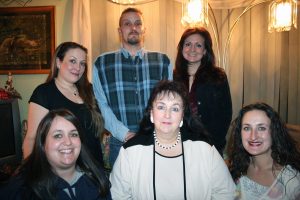
When they are in town, Toni likes to be a homebody, when she isn’t working. They have two dogs that they absolutely love. Toni spoils the dogs, cooking for them just like they were her kids. When it snowed this last time, she and Dave went into the back yard and shoveled out a maze for the dogs. They just loved it. They ran back and forth excitedly, getting plenty of exercise for the day. My sister, Cheryl said it was really funny to watch. Most of us would get lost in a maze, but dogs can track their way out and back, so they had a blast. And of course, the snow wasn’t so deep that Toni and Dave couldn’t see over it…to rescue their babies, should they get lost.
For some time, Toni has run an eBay story, where she refurbishes items that anyone else would have thought junk. Now, however, she’s been phasing out her eBay store, because she is too busy with the dogs. My sister  fared pretty well from that, because she got to go to Toni’s house a few weeks ago to “shop” for anything she might like. Toni is such a giver. Cheryl came home with a purse full of costume jewelry and a dozen purses! She is very kind in sharing all the treasures she has accumulated over the past few years. And speaking of being a giver, her sister Liz Masterson is reminded of the first job Toni got as a teenager, her greatest joy was to take her siblings shopping. How many teenagers would do that? Most of them want the job to buy things for themselves, but not Toni. Oh sure she got things for herself too, but her first thought was of her siblings. She loves to make people smile. What a great way to be. Today is Toni’s birthday. Happy birthday Toni!! Have a great day!! We love you!!
fared pretty well from that, because she got to go to Toni’s house a few weeks ago to “shop” for anything she might like. Toni is such a giver. Cheryl came home with a purse full of costume jewelry and a dozen purses! She is very kind in sharing all the treasures she has accumulated over the past few years. And speaking of being a giver, her sister Liz Masterson is reminded of the first job Toni got as a teenager, her greatest joy was to take her siblings shopping. How many teenagers would do that? Most of them want the job to buy things for themselves, but not Toni. Oh sure she got things for herself too, but her first thought was of her siblings. She loves to make people smile. What a great way to be. Today is Toni’s birthday. Happy birthday Toni!! Have a great day!! We love you!!
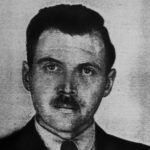
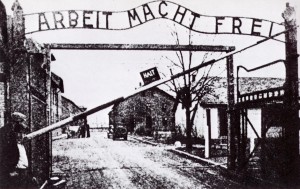 Most people would not think that the things Dr Gisella Perl did at Auschwitz during the Holocaust were angelic in any way, but the prisoners there, the women whose lives she saved would say otherwise. To them, she was an angel of mercy…even if some of the things she had to do were so horrific that she tried to commit suicide after the war. Dr Perl was a successful Jewish gynecologist from Romania, where she lived with her husband and two children. Right before the Nazi soldiers stormed her home, she was able to hid her daughter with some non-Jews, but she, her husband, son, her elderly parents who captured and taken to Auschwitz. Once they arrived, Gisella was separated from her family. They would be sent to be slave labor or to be killed. She would never see any of them again. Because she was a doctor, she was to be used in a different way…a horrifically gruesome way. She was to work for Dr Joseph Mengele, to be at his beck and call, and the things he made her do nearly killed her. She was a doctor. She was supposed to save lives, not be involved in ending them…or worse, but that was the position he put her in.
Most people would not think that the things Dr Gisella Perl did at Auschwitz during the Holocaust were angelic in any way, but the prisoners there, the women whose lives she saved would say otherwise. To them, she was an angel of mercy…even if some of the things she had to do were so horrific that she tried to commit suicide after the war. Dr Perl was a successful Jewish gynecologist from Romania, where she lived with her husband and two children. Right before the Nazi soldiers stormed her home, she was able to hid her daughter with some non-Jews, but she, her husband, son, her elderly parents who captured and taken to Auschwitz. Once they arrived, Gisella was separated from her family. They would be sent to be slave labor or to be killed. She would never see any of them again. Because she was a doctor, she was to be used in a different way…a horrifically gruesome way. She was to work for Dr Joseph Mengele, to be at his beck and call, and the things he made her do nearly killed her. She was a doctor. She was supposed to save lives, not be involved in ending them…or worse, but that was the position he put her in.
First, he told her to round up any pregnant women. She thought she was going to be caring for these women, but after she turned over 50 women, and they were immediately sent to the gas chambers, a horrified Dr Perl made up her mind that somehow, she would do whatever she could to thwart the Nazis horrible plans. She had not understood what was goin to happen to the pregnant women she turned over, and the thought of her part in their loss of live, nearly killed her. The things she did after that first horrible mistake, might not seem to most people, including me, like the actions of an angel, but I can see that she had no real choices.
The women Dr Perl cared for had been treated horrible by the Nazi soldiers. Their wounds consisted of lashes from a whip on bare skin, to bites from dogs, to infections from the horribly unsanitary conditions. When she entered the room, the prisoners in the infirmary knew that she was there to help. That was the good part of her life at Auschwitz, but Dr Mengele was a cruel and evil man, and he was determined to kill any pregnant woman. This left Dr Perl with an extremely difficult decision to make. She could watch as the mother and baby were put to death, or she could abort the babies and give the mothers the chance to live to have a family later. The choice was unthinkable to her, but it was also a non-choice. She could lose one life or both. The abortions were performed in secret, often in darkness, and the women whose lives she saved…well, they were grateful, even 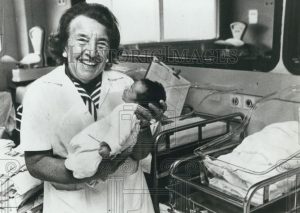
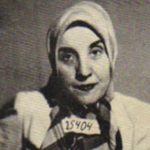 though they mourned their babies and never truly got over the decisions they and Dr Perl made. Later in life, after the war, Dr Perl went on to deliver many live babies, rejoicing over each. She was bold with God, telling him, when a baby seemed unlikely to make it, that God owed her this baby, because of those she could not save in the Holocaust. God honored her prayers, and gave her the healthy babies she requested of Him. I think He considered her the Angel of Auschwitz too.
though they mourned their babies and never truly got over the decisions they and Dr Perl made. Later in life, after the war, Dr Perl went on to deliver many live babies, rejoicing over each. She was bold with God, telling him, when a baby seemed unlikely to make it, that God owed her this baby, because of those she could not save in the Holocaust. God honored her prayers, and gave her the healthy babies she requested of Him. I think He considered her the Angel of Auschwitz too.
 When my dad, Allen Spencer and his brother, Bill Spencer were young boys going to school, their dad, Allen Luther Spencer worked for the Great Northern Railway. Because they lived a good distance from school, the boys and their sister, Ruth Wolfe had a dependent pass to ride the train to school. That pass didn’t stop the boys from “hopping” the train…in true Hobo fashion. Of course, we know that “hopping” a train is illegal now, but back then it wasn’t. My dad, Uncle Bill, and Aunt Ruth had passes however, so
When my dad, Allen Spencer and his brother, Bill Spencer were young boys going to school, their dad, Allen Luther Spencer worked for the Great Northern Railway. Because they lived a good distance from school, the boys and their sister, Ruth Wolfe had a dependent pass to ride the train to school. That pass didn’t stop the boys from “hopping” the train…in true Hobo fashion. Of course, we know that “hopping” a train is illegal now, but back then it wasn’t. My dad, Uncle Bill, and Aunt Ruth had passes however, so  while they weren’t supposed to hop the train, it wouldn’t have been illegal anyway, because they had a pass…just not to hop the train.
while they weren’t supposed to hop the train, it wouldn’t have been illegal anyway, because they had a pass…just not to hop the train.
During the Depression years, there were a lot of Hobos. The railroad was a quick way to get to jobs far away…and it wasn’t technically illegal…just frowned upon. President Roosevelt even created the 1933 Federal Transient Service, which built 600 shelters alongside the trains, to provide food, board, and medical care for working migrants…aka hobos, or at least part of them. As organized crime began using the railway for it’s own purposes, these services were shut down, and “hopping” a train became illegal. Nevertheless, illegal or not, there are actually tons of resources  online to help hobos, and most hobos carry smart phones, and even laptops, so they can take advantage of the online forums and Facebook pages available to them. I looked at these online sites, and I found that they call themselves misfit travelers.
online to help hobos, and most hobos carry smart phones, and even laptops, so they can take advantage of the online forums and Facebook pages available to them. I looked at these online sites, and I found that they call themselves misfit travelers.
Over the years, hobos have developed their own code and language. I found that to be very interesting. Life on the streets, and especially train hopping can be a very dangerous kind of lifestyle. Sometimes, people living on the streets and traveling by hopping trains, need help…even if they find themselves in a position whereby they have to bend the law a little. Th codes and the language they developed help them maneuver this world in a little bit more safe way. I’m not condoning breaking the law, but these people are already there. They just took a wrong turn, and now they need help to make it, and hopefully make it back.
 Without a doubt, the greatest thing to happen to a person in life is becoming a parent. That is the life change that happened to my grand-niece, Siara Olsen and her husband, Nick on October 28, 2019. Now, Siara is celebrating her first birthday since becoming “Mommy” to little Alec Todd Olsen. It is so hard to believe that Siara could be a mom already, and yet, she has stepped into the role as naturally as if she had been a mom for years. Watching her hold her baby puts a smile on my face, and the faces of all her family too. She just looks so content…and, so does Alec. There is nothing like having a baby to snuggle with, to bring home just how precious life is.
Without a doubt, the greatest thing to happen to a person in life is becoming a parent. That is the life change that happened to my grand-niece, Siara Olsen and her husband, Nick on October 28, 2019. Now, Siara is celebrating her first birthday since becoming “Mommy” to little Alec Todd Olsen. It is so hard to believe that Siara could be a mom already, and yet, she has stepped into the role as naturally as if she had been a mom for years. Watching her hold her baby puts a smile on my face, and the faces of all her family too. She just looks so content…and, so does Alec. There is nothing like having a baby to snuggle with, to bring home just how precious life is.
Siara is a bubbly, sweet girl who is very capable in her job at Platte Valley Bank, here is  Casper, Wyoming, where she works as a personal banker. I don’t think there is one customer at the bank who doesn’t know Siara by the smile on her face and her sweet personality. Of course, going back to work after giving birth to Alec wasn’t easy, as any mother who worked, knows well. I felt so bad for her, because I know how short maternity leave is, when it comes right down to it. Eight weeks or whatever amount each mother has, seems like a long time…if you are waiting for your baby’s birth!! Once your baby has arrived, eight weeks is nothing. It’s over almost in an instant, and leaving your child in daycare, even if you know the people well, is heart wrenching. Eventually thought, you get used to it, and while you miss your baby terribly, you begin to look forward to the end of your work day, when you will be reunited with that sweet bundle of joy. Then, when you pick him up from daycare, your whole world is smiling again. And then, Siara and Nick have the whole evening to enjoy their precious little son, who keeps them smiling with his sweet little face, filled with
Casper, Wyoming, where she works as a personal banker. I don’t think there is one customer at the bank who doesn’t know Siara by the smile on her face and her sweet personality. Of course, going back to work after giving birth to Alec wasn’t easy, as any mother who worked, knows well. I felt so bad for her, because I know how short maternity leave is, when it comes right down to it. Eight weeks or whatever amount each mother has, seems like a long time…if you are waiting for your baby’s birth!! Once your baby has arrived, eight weeks is nothing. It’s over almost in an instant, and leaving your child in daycare, even if you know the people well, is heart wrenching. Eventually thought, you get used to it, and while you miss your baby terribly, you begin to look forward to the end of your work day, when you will be reunited with that sweet bundle of joy. Then, when you pick him up from daycare, your whole world is smiling again. And then, Siara and Nick have the whole evening to enjoy their precious little son, who keeps them smiling with his sweet little face, filled with  smiles. The evenings are just perfect for this young family.
smiles. The evenings are just perfect for this young family.
Now that little Alec is here, life for Siara and Nick is always looking up. I think that most parents can relate to the tremendous joy they feel with each new day. With each smile, each landmark, each passing year, and each new sibling that comes along after Alec, life will continue to get better and better for them. I am so happy for Siara, as she celebrates her first birthday as a mommy, and for Nick too, as he celebrates his family. The future is bright for both of them, and I look forward to watching little Alec grow up and be such a great blessing to his parents and his family. Today is Siara’s birthday. Happy birthday “Mommy” Siara. Have a great day!! We love you!!

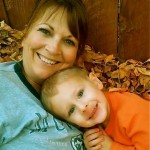 The other day, I saw on her Facebook, where my grand nephew, Ethan Hadlock’s mom, Chelsea Hadlock had registered him for middle school for the fall semester. Chelsea mentioned that she suddenly felt old, and I found myself shocked that Ethan could be so grown up…already!! My sister and Ethan’s grandmother, Allyn Hadlock told me, “It seems like just yesterday that he was 2 and I was chasing him around our house. He loved the chasing game and I would catch him and give him little love pat spankins.” None of us can believe that he is almost in middle school now. The time has flown by so fast. While Ethan is growing up fast, he is not outgrowing everything he likes to do. He still loves games, but now it’s board games, “I Spy” games, video games, and sports. Typical of kids his age.
The other day, I saw on her Facebook, where my grand nephew, Ethan Hadlock’s mom, Chelsea Hadlock had registered him for middle school for the fall semester. Chelsea mentioned that she suddenly felt old, and I found myself shocked that Ethan could be so grown up…already!! My sister and Ethan’s grandmother, Allyn Hadlock told me, “It seems like just yesterday that he was 2 and I was chasing him around our house. He loved the chasing game and I would catch him and give him little love pat spankins.” None of us can believe that he is almost in middle school now. The time has flown by so fast. While Ethan is growing up fast, he is not outgrowing everything he likes to do. He still loves games, but now it’s board games, “I Spy” games, video games, and sports. Typical of kids his age.
Ethan loves to get together with the whole family. He is a very social kid, and the family had a great time at Christmas and New Year’s. They hung out and enjoying each other’s company. They played bingo, letting Ethan  and his sister, Aurora Hadlock take turns being the bingo callers. They loved rolling the cage around and getting the numbers out. Ethan is very kind and empathetic, and he truly cares about people. He wants to make sure that family and friends around him are comfortable and feel loved. He really is the sweetest boy, and it is something our whole family knows. Ethan’s dad, Ryan Hadlock is a playful teaser from way back, and Ethan has proven to be a quick study in that art. He has already started giving all of the family a hard time whenever he gets a chance.
and his sister, Aurora Hadlock take turns being the bingo callers. They loved rolling the cage around and getting the numbers out. Ethan is very kind and empathetic, and he truly cares about people. He wants to make sure that family and friends around him are comfortable and feel loved. He really is the sweetest boy, and it is something our whole family knows. Ethan’s dad, Ryan Hadlock is a playful teaser from way back, and Ethan has proven to be a quick study in that art. He has already started giving all of the family a hard time whenever he gets a chance.
Ethan and his cousin, Adelaide Sawdon have formed a special bond and can often be found “securing the perimeter” anytime they are together. Apparently, they both have an interest in spy games. They take their toys guns (whether an actual toy gun or a stick they have fashioned into one) and walk around the area we are in to ensure no spies, enemies, or unwanted guests can get in. He takes care to be patient and kind when explaining the rules of the game to his younger cousins, so they have a chance to play with their older and “adored” Ethan. He is so fun loving and the best nephew in our family…never mind 
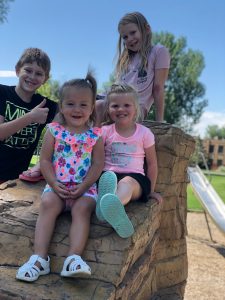 that he is the only nephew!! His sweetness would still make his the best one.
that he is the only nephew!! His sweetness would still make his the best one.
With each birthday, the birthday boy or girl gets to choose where the family goes for dinner, and Ethan didn’t hesitate to choose Buffalo Wild Wings for his dinner tonight, so the family will all gather there to eat wings and celebrate their little boy, who isn’t so little anymore. Ethan is now almost 5 feet tall. It looks like Ethan will take after his dad and grandpa, Chris Hadlock, both of whom are very tall. Ethan has so much going for him. He is such a good kid…both kind and tender hearted. He is the kind of kid you like to have around. Today is Ethan’s 11th birthday. Happy birthday Ethan!! Have a great day!! We love you!!
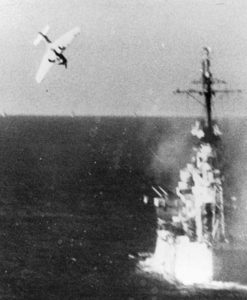 It is a strange idea to give a pilot minimal training and then send them out to do a mission, but it depends, I suppose on the mission they are sent out to do. With Japan losing the war and most of the well trained pilots gone, as a result of major battle losses, a new breed of pilots was born. These new pilots were called Kamikaze or Suicide Bombers. They required only minimal training, because most would not return from their missions. It was part of a strange plan that required the pilot to deliberately give up their life for the mission. Of course, every soldier knows that the next mission could end badly, and that losing their life is never out of the question, but the idea of heading out with the specific plan of crashing your plane into a ship is very foreign to me.
It is a strange idea to give a pilot minimal training and then send them out to do a mission, but it depends, I suppose on the mission they are sent out to do. With Japan losing the war and most of the well trained pilots gone, as a result of major battle losses, a new breed of pilots was born. These new pilots were called Kamikaze or Suicide Bombers. They required only minimal training, because most would not return from their missions. It was part of a strange plan that required the pilot to deliberately give up their life for the mission. Of course, every soldier knows that the next mission could end badly, and that losing their life is never out of the question, but the idea of heading out with the specific plan of crashing your plane into a ship is very foreign to me.
From a training aspect, I suppose the Japanese felt it was a good tradeoff. The 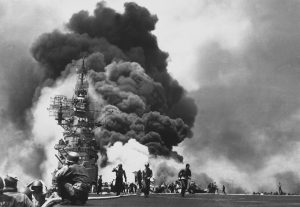 Kamikaze pilots needed little training and could do great damage taking planes full of explosives and crash them into ships. Still, it seems to me that the cost of the training, and the loss of the planes on every mission…not to mention the loss of pilots, would completely defeat the purpose of the pilot training. Nevertheless, Kamikaze pilots have been around a while, and some nations see suicide missions as honorable somehow. Everyone knows that in a war, people are going to die, from both sides, but to specifically plan to take your own life for the mission, seems crazy to me, and to most sane people.
Kamikaze pilots needed little training and could do great damage taking planes full of explosives and crash them into ships. Still, it seems to me that the cost of the training, and the loss of the planes on every mission…not to mention the loss of pilots, would completely defeat the purpose of the pilot training. Nevertheless, Kamikaze pilots have been around a while, and some nations see suicide missions as honorable somehow. Everyone knows that in a war, people are going to die, from both sides, but to specifically plan to take your own life for the mission, seems crazy to me, and to most sane people.
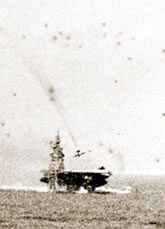
For the Japanese, the Kamikaze mission brought a temporary measure of success, I suppose. At Okinawa, they sank 30 ships and killed almost 5,000 Americans. In that process, 30 pilots, who paid for the victory with their lives, were also lost in the mission. And in the end, the Kamikaze missions made no real difference in the war’s outcome. They still lost the war, and to me, that does not make the Kamikaze missions worthwhile. I don’t think it ever pays to take so little consideration for the lives of the people who serve under you. I believe that is the biggest mistake made by these horrific regimes. Such a murderous nation cannot long succeed, because people will eventually put a stop to it. The only sad part is that sometimes it takes so long to put a stop to these horrific acts. Kamikaze pilots, suicide bombers, and any other soldier who’s mission requires his own death, all fall into the category of a price too high to pay.
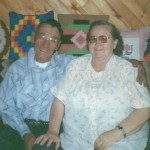
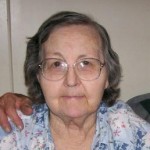 It seems impossible to me that my mother-in-law, Joann Schulenberg could be gone now for two years. She was such a fighter, when it came to her health. There were a number of times that we thought we had lost her, but she always bounced back…until she didn’t. The end of her days had come, and with it, there were no parents in our lives again. My parents, Al and Collene Spencer and my father-in-law, Walt Schulenberg were gone, and now my mother-in-law had joined them in Heaven. It felt empty here on earth. The loss hit hard with each of my four parents, but with my mother-in-law, there was also the finality of it. We had no more parents. We, their children, are the matriarchs and patriarchs of our families now, but it feels like we are orphans. The knowledge that you have no parents, really brings that orphaned feeling home.
It seems impossible to me that my mother-in-law, Joann Schulenberg could be gone now for two years. She was such a fighter, when it came to her health. There were a number of times that we thought we had lost her, but she always bounced back…until she didn’t. The end of her days had come, and with it, there were no parents in our lives again. My parents, Al and Collene Spencer and my father-in-law, Walt Schulenberg were gone, and now my mother-in-law had joined them in Heaven. It felt empty here on earth. The loss hit hard with each of my four parents, but with my mother-in-law, there was also the finality of it. We had no more parents. We, their children, are the matriarchs and patriarchs of our families now, but it feels like we are orphans. The knowledge that you have no parents, really brings that orphaned feeling home.
My mother-in-law, was a homemaker for most of her life, and very skilled in things like cooking, sewing, knitting, crocheting, and canning. These were things she passed down to her daughters, and to me. Of course, my own mother taught me part of these things too, but we didn’t can often, other than making jelly, and the things my mother-in-law cooked were different from my own mom, so that added variety to my abilities. My mother-in-law, was probably best known for her sewing, knitting, and crocheting. She sold many of her crafts at craft fairs over the years, adding to the family budget and to her craft budget as well. She also loved to bake, and her “Murder Cake” was a family favorite.
My in-laws lived in the country for most of the time I knew them, but they moved to town in the last years of their lives. While she preferred the quiet of the country, my mother-in-law did enjoy watching all the activity that took place near their home at the corner of two busy streets in In her later years, my mother-in-law developed Alzheimer’s Disease. Casper. After she had to be moved to Shepherd of the Valley nursing home, she 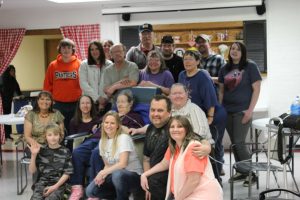 enjoyed the activity there, especially at the nurses station, because she was a “people watcher” all her life. She liked to see what everyone around her was up to, and figure it all out, even wondering why they spoke to the people they did, or did the things they did. I was glad that her curiosity never left her. It made her time in the nursing home must more interesting. Finally, on January 4, 2018, she lost her health battle. Like most Alzheimer’s patients, it was not the disease that took her, but rather that her kidneys gave out. She passed peacefully that evening, after having her family around her earlier in the day. She simply went to sleep, and went home. While we were so sorry to see her go, we knew she was tired of fighting. We love and miss her very much.
enjoyed the activity there, especially at the nurses station, because she was a “people watcher” all her life. She liked to see what everyone around her was up to, and figure it all out, even wondering why they spoke to the people they did, or did the things they did. I was glad that her curiosity never left her. It made her time in the nursing home must more interesting. Finally, on January 4, 2018, she lost her health battle. Like most Alzheimer’s patients, it was not the disease that took her, but rather that her kidneys gave out. She passed peacefully that evening, after having her family around her earlier in the day. She simply went to sleep, and went home. While we were so sorry to see her go, we knew she was tired of fighting. We love and miss her very much.
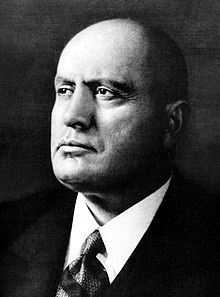 Every United States Presidential election brings heated debates, and many arguments from both sides of the aisle. I’m sure it is the same in most other nations, who have the opportunity to vote too. Being an unapologetic Conservative, it is my belief that the less the government controls the citizens the better. Socialism and Fascism are both forms of government control, and while some people think these are great, they ultimately find out that what the government gives, the government can also take away. This was what we saw with Adolf Hitler. He came into office as an elected official, and before long, he changed everything for the German people, and in many ways the world, especially the Jewish people, Gypsies, and any other groups he disagreed with. The people were fooled into thinking he was a great man, until it was too late.
Every United States Presidential election brings heated debates, and many arguments from both sides of the aisle. I’m sure it is the same in most other nations, who have the opportunity to vote too. Being an unapologetic Conservative, it is my belief that the less the government controls the citizens the better. Socialism and Fascism are both forms of government control, and while some people think these are great, they ultimately find out that what the government gives, the government can also take away. This was what we saw with Adolf Hitler. He came into office as an elected official, and before long, he changed everything for the German people, and in many ways the world, especially the Jewish people, Gypsies, and any other groups he disagreed with. The people were fooled into thinking he was a great man, until it was too late.
Similar to Adolf Hitler, Italian Fascist leader Benito Mussolini did not become the dictator of a totalitarian regime overnight. Mussolini started out as a schoolteacher and an avowed socialist. After World War I he became a leader of the nascent Fascist movement. Like much of Europe, Italy was in the middle of great social turmoil following World War I. During the turmoil, paramilitary groups and street gangs frequently clashed over their competing ideas for the new political order. A close confidant of Mussolini formed a Fascist paramilitary group, known as the Blackshirts or Squadristi, and because Mussolini was their leader, the gangs found that government fears of a communist revolution allowed them to operate without state intervention. Apparently, the people thought Socialism and Fascism were better than Communism. By 1921, Mussolini had been elected to parliament as the leader of the growing National Fascist Party.
Soon after Mussolini’s election…the party’s Chosen One…armed Blackshirts marched on Rome, demanding that the king install Mussolini as Prime Minister. Why the king allowed this to happen, is beyond me, but in a decision that utterly changed the course of Italian and European history, King Victor Emmanuel III ignored Prime Minister Luigi Facta’s pleas that he declare martial law, leading to Facta’s resignation and Emmanuel’s invitation to Mussolini to form a new government. It was a move that was completely insane. The Fascists and their moderate allies began dismantling Italy’s democratic institutions. Mussolini was proclaimed dictator for a year, like that was going to be all it was, and increasingly merged his party and its paramilitary wing with the state and the official military. He also undertook a program of privatizations and anti-union legislation in order to assure industrialists and aristocrats that fascism would protect them from socialism. Before long, the Italian government didn’t even resemble its former self.
Still, many Fascists felt Mussolini was moving too slowly, so they took matters into their own hands. In 1924, assassins with ties to Mussolini killed socialist leader Giacomo Matteotti, leading most of the parliamentary opposition to boycott Mussolini’s legislature. The Fascists felt that their moment had come. On December 31,  they issued an ultimatum to Mussolini. Three days later on January 3rd, he addressed the remainder of parliament, declaring “I, and I alone, assume the political, moral, and historical responsibility for all that has happened,” obliquely referring to the assassination of Matteotti. In doing this, Mussolini dared prosecutors and the rest of Italy’s democratic institutions, as well as the king, to challenge his authority. It was their last chance, but no one opposed him. Thus, from 1925 onward, Mussolini was able to operate openly as a dictator, styling himself Il Duce (meaning The Leader) and fusing the state and the Fascist Party. For the next two decades, suppression and brutality became the norm, culminating in Mussolini’s alliance with Nazi Germany and World War II. I heard it said that, “You can vote yourself into Socialism, but you will have to shoot your way out of it.” It is a good warning for all of us as we approach the next Presidential election. We have a number of candidates who want Socialism, and it would be a dire mistake to allow that to happen to our free, Capitalist nation. People don’t always understand how important our elections are.
they issued an ultimatum to Mussolini. Three days later on January 3rd, he addressed the remainder of parliament, declaring “I, and I alone, assume the political, moral, and historical responsibility for all that has happened,” obliquely referring to the assassination of Matteotti. In doing this, Mussolini dared prosecutors and the rest of Italy’s democratic institutions, as well as the king, to challenge his authority. It was their last chance, but no one opposed him. Thus, from 1925 onward, Mussolini was able to operate openly as a dictator, styling himself Il Duce (meaning The Leader) and fusing the state and the Fascist Party. For the next two decades, suppression and brutality became the norm, culminating in Mussolini’s alliance with Nazi Germany and World War II. I heard it said that, “You can vote yourself into Socialism, but you will have to shoot your way out of it.” It is a good warning for all of us as we approach the next Presidential election. We have a number of candidates who want Socialism, and it would be a dire mistake to allow that to happen to our free, Capitalist nation. People don’t always understand how important our elections are.

